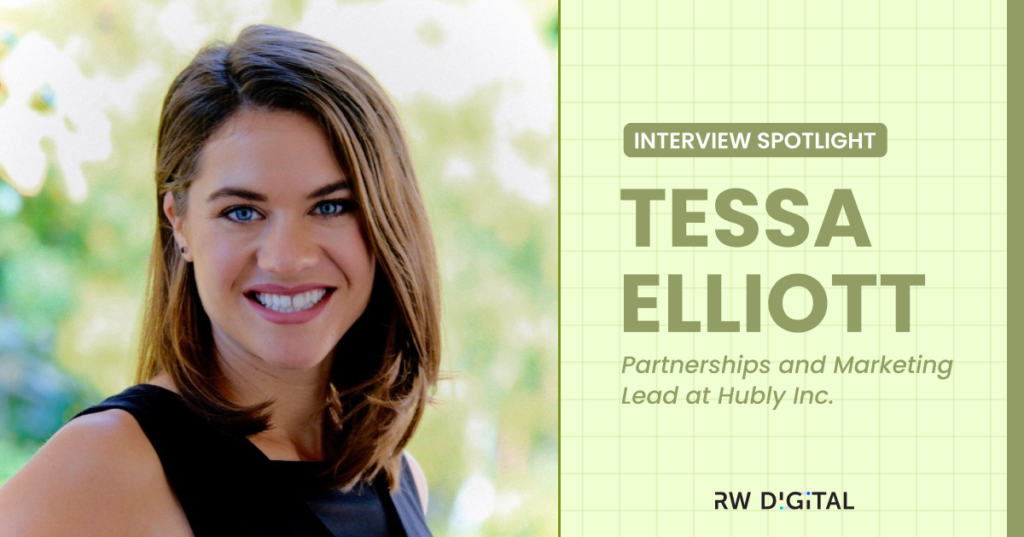Marketing Interview with Tessa Elliott, Partnerships and Marketing Lead at Hubly Inc.

How has the current health condition affected the technology sector and the financial industry?
The financial services industry was resilient to the pandemic, however the technology around it had to change. The financial service industry has historically been in-peron, client facing, fully centralized, and not set up for a remote world. The pandemic suddenly forced industries to move towards “remote work” and the financial industry was no exception. As a result the need to adapt to a more technologically reliant world significantly sped some of the core changes in the finance industry, such as a focus on business process automation, digital transformation of the client experience, and a need to address the talent gap and keep back office workers happy and productive.
What opportunities has the current health condition created for the technology or financial sector?
Because of the pandemic the financial industry has begun to adapt more quickly to new technology. As a result, professionals within the financial industry, who had been doing things the same way for years, have become more open minded to the benefits and opportunities that new technology creates.
There is new focus on driving business process automation, digital transformation of the client experience, and a need to address the talent gap and keep support staff happy and productive. There is a growing understanding that the main purpose of technology isn’t to replace humans, but make them more efficient and better at their jobs.
What marketing trend do you foresee in the next two to three years?
Marketing and Sales have traditionally been viewed as two distinct departments with little overlap. However, when you sit back and consider the main objective of the marketing team, it’s to increase revenue – the exact same objective as the sales team. With the development of new software, such as Hubspot which merges together products for marketing and sales, the lines are becoming more and more blurred between the two. In the next two to three years I foresee sales and marketing merging from siloed departments into a more collaborative “smarketing” department.
In fact, a recent study by SiriusDecisions found that B2B organizations with tightly aligned marketing and sales achieved 24% faster revenue growth and 27% faster profit growth over a three-year period.
The insights that the sales team can provide to the marketing department from speaking directly to customers is invaluable to the marketing team. With consistent communication from the sales, the marketing team can tailor their messaging for prospects, and create support documents and educational materials to help the sales team close more deals. In return, the sales team can tailor their lead management to be a continuation of current marketing campaigns.
What are three marketing tips you would give to small businesses (e.g. mom and pop stores) that want to increase their revenues?
Leverage user generated content – if you are a small business it’s impractical to tell you to push out as much content as possible to increase organic traffic and build brand trust. Instead, my recommendation would be to leverage your customer base. These days with social media, every customer has the ability to market on your behalf. Take advantage of this by encouraging people to post and tag about your business on social media, leave reviews, refer a friend, or even write content for you – get creative and have fun with it!
- Don’t throw money at a problem – It’s tempting to pay for digital ads to generate more sales (or at least in hopes of generating more sales). However, if you are not experienced in this area you may just be throwing money at a problem instead of solving the problem. When you generate leads from your digital ads, you need to have a plan in place for what you are going to do with the leads you bring in. There is more to marketing than putting out an advertisement so I would encourage someone who doesn’t have the skillset to hire someone who does so that they can focus on the areas of the business they are best at.
Don’t try to be everywhere – as a small business you are already stretched thin and so managing multiple different social media channels and digital marketing efforts can be overwhelming. As a result, their quality will suffer. When it comes to creating an online presence, figure out where your audience hands out – whether it’s Instagram, Facebook, LinkedIn, TikTok or their email inbox. Once you know where your target audience is most active, double down on that platform to make a splash and don’t worry about the rest. It’s better to have a strong presence on one platform than a weak presence across five.
I know you only asked for three but I thought I’d sneak one more in! Last but not least it’s all about education. Would you walk up to someone and expect them to buy your running shoes just because you are shoving them in front of their face asking them to buy them? Probably not. So why would you expect them to buy the same running shoes that pop up as an ad on their phone?
Instead you first need to focus on building that trust with your target audience, and this is done through education. Once a customer has an understanding of how your product works and solves their problem they will be way more likely to take an interest in what you are selling. For example, if the running shoes you are selling glow in the dark, you can provide education around safe running at night. This will build trust with your prospects by showing them that you care about their safety as well as creating a need to buy by showing them how vulnerable they are when running at night in plain old non-glowing running shoes. See, I bet you want glow in the dark shoes now?
What are your top three business books, podcasts, or other resources and why?
Predictably Irrational: The Hidden Forces That Shape Our Decisions – This was a book assigned to you by one of my marketing professors in university and it has stuck with me through the years. The book dives into the irrational decisions people make – such as spending the gas money on gas to drive to a store that’s farther away by 15 minutes just to buy bread that’s on sale. The findings of this book are extremely interesting and can be applied to marketing.
Never Split the Difference – a former FBI agent applies his expert negotiation knowledge to the business world in this fascinating book. While I didn’t exactly absorb all of the findings and skills from the author (may take a few more years of practice!), it’s an eye opening book for how to become more persuasive in your professional and personal life.
Startup Podcast: I really enjoyed this podcast because instead of interviewing entrepreneurs who have already become successful it gave a very real and raw look into what it takes to start a business from the very beginning without knowing whether or not the business will work out. I appreciate this podcast because the host uses himself as the subject for the first season as he tries to launch his own podcast network. In it the host is extremely honest, transparent, and even lets us have a laugh at his own expense.

Tessa Elliott
Tessa Elliott is the Partnerships and Marketing Lead at Hubly, a Vancouver based SaaS company and start-up. Hubly revolutionizes practice management for financial advisory firms by bringing easy-to-use workflows, better client tracking, and seamless collaboration into a digital workspace. Tessa’s focus is on building and fostering partnerships within the financial service industry and creating educational content and buzz around Hubly’s technology. She has past experience in scaling inbound and outbound marketing funnels and partnership development. Tessa has an entrepreneurial spirit and passion for helping businesses grow – which is why she is drawn to the exciting world of start-ups.

